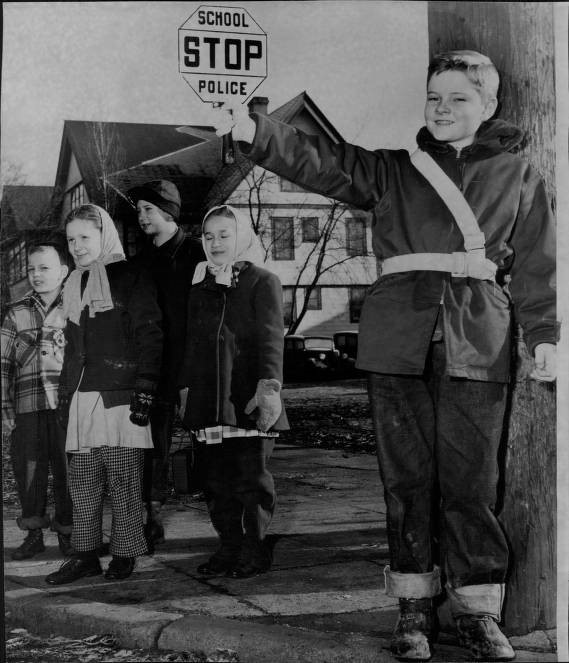
With the start of another new school year starting, I got to thinking about how different things were 60 some years ago when I was in grade school in North Minneapolis.
For beginners, in the 1950s there were no school busses to take you to school. Students on the Northside all walked to school. Now I’m not going to tell you that I walked up hill both ways, but I did have to walk several blocks in all kind of weather. The kids on my block had to cross both Penn Ave and Olson Memorial Highway to get to school. There weren’t any school patrols until we got to the last corner across the street from the school. Now days, kids mostly take busses to school and those that do walk to school don’t cross highways.
Once we got to school, there were no lockers for our coats, jackets, boots etc. Instead there was a cloak closet with hooks for hanging our stuff on. It was also a place you were sent to if you were misbehaving — to what these days would be called a “time out” or “take a break.” Admittedly, I spent my fair share of time in the cloak closet for talking too much instead of getting my work done. The school day always started with reciting the Pledge of Allegiance while facing the U.S. Flag in our classroom. The first few years I was in school, that flag only had 48 stars. It wasn’t until 1959 that Alaska and Hawaii became the 49th and 50th states.
In grade school we walked home for lunch, which often was a peanut butter sandwich, and then we walked back to school afterwards. None of the elementary schools on the Northside were built with lunchrooms. The junior and senior highs however all had cafeterias because the students were coming from further away. Looking back, I think one of the good things about walking home and back in the middle of the day was that we got to burn off some energy and break up the day.
Of course, there were no computers, iPads or smart phones then. Teachers wrote things on a blackboard with chalk. Every day the teacher would choose a student or two to take the chalkboard erasers outside and beat them together or against the building to clean the chalk off so they’d be ready for the next day. We also had worksheets that were copied on a ‘ditto’ machine. The printing was purple and those papers smelled of chemicals. Another thing we did that most students no longer do was to learn to write in cursive. We would also practice our penmanship so that our cursive writing looked neat.
Another thing we did back then, that you don’t see anymore, was to have paper drives at school once or twice a year. Long before the city started to pick up recycling, collecting large amounts of old newspapers was used as a fundraiser for schools. There was usually some kind of competition to see which classroom would bring in the most papers. At John Hay School, where I went, bringing in magazines was extra special. On the day the paper drive was announced, every kid on my block would race home to be the first one to knock on Mrs. Farmer’s door because she always had a stack of magazines! When the day of the drive came some of the kids’ parents would drive the papers to school, but my mom didn’t drive and my dad was at work so ours were hauled to school in my red Greyhound wagon.
I should mention that there was one rather big thing that happened at school in the mid-1950s that you wouldn’t see now days. We all got the newly invented Polio vaccine. Polio was a contagious devastating disease that could be deadly and often left people paralyzed for life. Having a vaccine against Polio was such a relief that mass inoculations were done at schools. The first ones were shots but then later there was an oral vaccine that you just had to drink.
Things were definitely different back when I went to grade school, not necessarily better, but definitely different.


